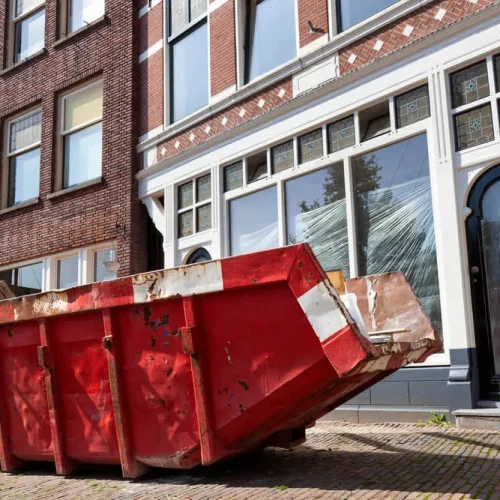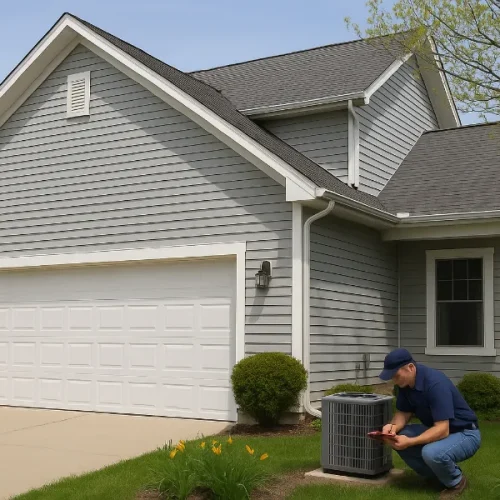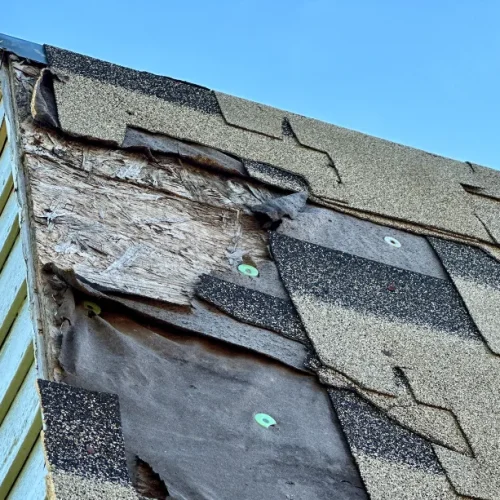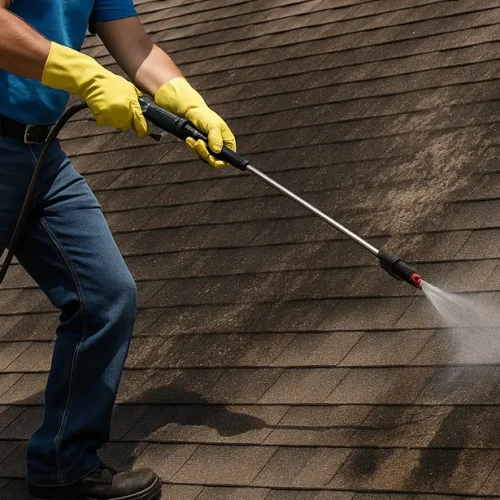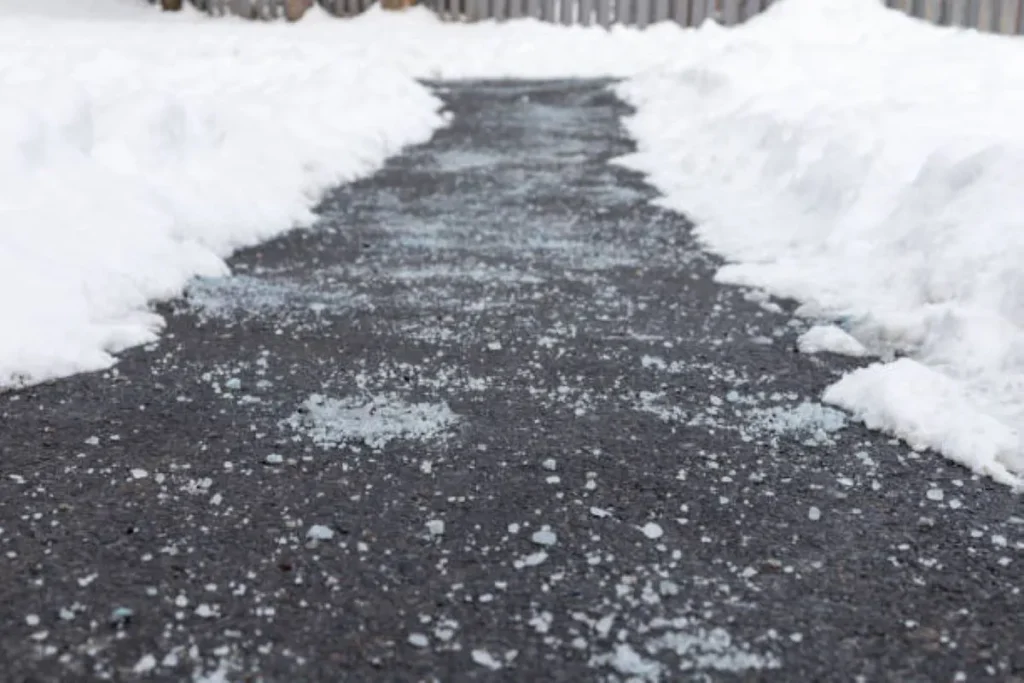
Winter brings its own set of challenges, and keeping pavement safe from ice buildup is at the top of the list. Commercial lot or a residential driveway, effective de-icing practices prevent damage and reduce long-term costs. The key lies in balancing efficiency with sustainability to protect both surfaces and spending.
1. Pre-Treatment Planning
Successful de-icing begins before the first snowflake lands. Searching for bulk salt suppliers near me early in the season ensures you have a steady supply of materials when storms arrive. Buying in advance helps lock in better pricing and guarantees availability during supply shortages. Pre-treatment applications, such as brine or treated salt, prevent ice from bonding to the pavement surface.
A good pre-treatment plan focuses on efficiency. Applying brine 24 hours before a storm reduces how much solid salt you’ll need later. This barrier layer also makes mechanical removal faster and more effective. When planned correctly, pre-treating lowers overall material use and improves long-term pavement health.
2. Choose the Right De-Icing Material for Each Condition
Rock salt is effective and affordable, but it loses strength at very low temperatures. Calcium chloride and magnesium chloride work better in extreme cold, melting ice faster while using less product. Blended materials combine the advantages of multiple compounds, giving a balance of performance and cost control.
The correct product depends on weather severity, surface type, and environmental considerations. Concrete, asphalt, and brick all respond differently to various chemicals. Selecting the proper formula prevents scaling, cracking, or surface weakening over time. Matching materials to conditions not only improves efficiency but also extends the pavement’s lifespan.
3. Partner with Reliable Bulk Material Sources
Sourcing de-icing materials from dependable distributors ensures consistency in quality and supply. When searching for bulk ice melt suppliers near me, look for trusted partners that offer competitive pricing, reliable delivery, and expert guidance on proper storage and application. Partnering with experienced suppliers also helps ensure that you’re using the right materials for regional weather conditions and performance needs. Choosing reliable local sources provides steady availability during peak demand and helps keep operations efficient throughout winter.
Beyond convenience, strong supplier relationships foster reliability. When winter storms hit unexpectedly, dependable partners deliver faster than retail options. Many even offer pre-mixed solutions and treated salt blends that perform better in moisture-heavy environments. Choosing the right bulk supplier helps balance operational efficiency with material performance.
4. Understand Application Rates and Efficiency
Applying too much de-icer wastes money and harms pavement and vegetation. Applying too little, on the other hand, leaves surfaces unsafe. The ideal approach is precision. Following manufacturer-recommended rates ensures effective melting without excess runoff or residue.
Using calibrated spreaders and equipment helps maintain consistent distribution. Operators should monitor conditions and adjust applications based on temperature and storm intensity. Proper technique saves materials, reduces maintenance costs, and protects nearby soil and waterways. Every pound of salt used wisely adds up to measurable savings over a full winter season.
5. Technology for Smarter Ice Control
Modern snow and ice management tools can make a big impact. Liquid brine systems, automated spreaders, and weather-tracking software help crews make data-driven decisions. These tools allow better timing and more efficient use of resources. They also minimize human error, especially during multi-day storms.
Combining technology with skilled labor enhances performance while reducing waste. For municipal and commercial operators, the cost savings over multiple winters can be substantial. Digital tools transform de-icing from a reactive task into a strategic process.
6. Optimize Storage and Handling Methods
Proper storage is critical for maintaining de-icing material quality. Salt and liquid brine must be kept in covered, moisture-protected areas to prevent clumping and dilution. Outdoor piles should rest on impermeable surfaces with barriers that block runoff. Containment prevents contamination and complies with local environmental regulations.
Well-organized storage also improves logistics. Having designated zones for different products allows quick access during storms. Inventory tracking ensures materials are replenished before supplies run low. Efficient handling minimizes downtime and supports continuous winter operations.
7. Consider Eco-Friendly and Performance Blends
Many property managers now seek solutions that are both powerful and environmentally safe. Blended de-icers that include organic additives or beet juice extracts can reduce corrosion while maintaining melting performance. These products are less harsh on concrete, vegetation, and nearby water systems. When searching for bulk ice melt suppliers near me, choose reputable providers that offer eco-friendly blends designed for consistent quality and long-term value.
Such alternatives also lower long-term maintenance costs. Corrosion-resistant blends help extend the life of vehicles, plows, and spreader equipment. While slightly more expensive upfront, they save money through reduced damage and cleaner runoff. Choosing blends thoughtfully balances environmental care with effective ice management.
8. Integrate Mechanical and Chemical De-Icing
A complete de-icing plan combines physical and chemical strategies. Mechanical removal, such as plowing or sweeping, eliminates surface buildup before chemicals are applied. This step reduces the total amount of de-icer needed for complete melting. It also shortens the time required for full pavement clearing.
Using plows with proper blade types and settings ensures surfaces aren’t gouged or scraped too aggressively. Chemical application follows to address the thin ice layers that remain. This integrated approach reduces waste while delivering faster, safer results. Coordinating both methods keeps operations smooth and budgets balanced.
9. Monitor Pavement Temperature
Air temperature can mislead when deciding when to apply salt or brine. Pavement retains heat differently, depending on sunlight exposure and material type. A pavement thermometer provides accurate data for deciding when ice will actually form. Applying products at the right surface temperature maximizes melting power and minimizes waste.
Crews should also watch how quickly treated areas refreeze. Over time, they can adjust schedules to align with localized conditions. This kind of precision leads to safer walkways and parking areas with less chemical use. Understanding pavement temperature dynamics helps fine-tune every de-icing routine.
10. Use Salt Pre-Treated with Magnesium Chloride for Enhanced Performance
Salt pre-treated with magnesium chloride has become a top choice for efficient and cost-effective de-icing. This advanced treatment helps the salt work faster by lowering its freezing point and improving adhesion to pavement surfaces. The magnesium chloride coating also minimizes scatter loss, ensuring that more product stays where it’s applied. As a result, less material is needed to achieve the same melting power, helping reduce overall salt consumption and maintenance costs.
In addition to better performance, pre-treated salt performs well in extreme temperatures, where untreated rock salt becomes less effective. It also reduces corrosion on vehicles, spreaders, and storage equipment compared to traditional methods. When properly stored and applied, it delivers reliable results across a wide range of winter conditions.
De-icing is both a science and a strategy, and preparation determines success. When searching for bulk salt suppliers near me, choose trusted sources that provide consistent quality, fair pricing, and reliable delivery throughout the season. When combined with proper training, eco-conscious materials, and data-driven planning, these practices prevent damage and overspending. Implementing these essential de-icing techniques protects pavement, enhances safety, and ensures every winter season stays under budget without compromising performance.


